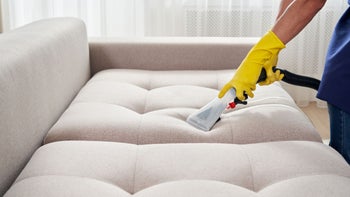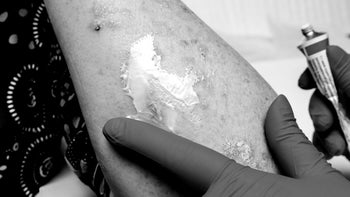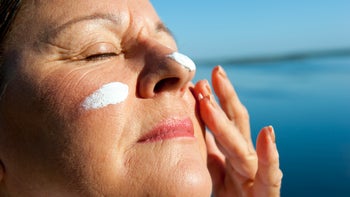
Bedbug Bites: Signs to Watch for (With Close-up Pictures)
Key takeaways:
Bedbugs are small bugs that can bite you at night and cause very itchy bites.
Bedbug bites usually occur in clusters and form lines or zigzag patterns on exposed skin.
In addition to bites, other signs of bedbugs to watch for include small red or black stains on your sheets and tiny, white, oval eggs in your mattress seams.
Table of contents

Bedbugs are small bugs that hide during the day and come out to feed at night. They usually live near where people sleep, like in mattress crevices, on headboards, and in furniture seams. Bedbugs also like to hitchhike. If you find them in your bedroom, they may have traveled there from a hotel in your suitcase or on your clothes.
Bedbugs don’t carry diseases. But they can cause an intensely itchy rash when they bite. Some people may only have a few bites at a time, while others can have dozens. Bedbugs aren’t the only critters that bite though. So it’s important to know what bedbug bites look like and what signs to look for.
What does a bedbug bite look like?
Bedbug bites can cause small, smooth bumps that can be different colors, depending on your skin tone. For example, bedbug bites can look:
Pink or red on lighter skin tones
Brown, violet, or skin-colored on darker skin tones
Search and compare options
Once the bites heal, they can also leave brown marks of hyperpigmentation. These can sometimes take months to heal.
Bedbug bites usually happen in clusters, often in a line or zigzag pattern. This is because each bedbug may bite a few times as they crawl around the skin. The bites also usually happen on body parts that are exposed at night, like the legs, arms, neck, and face.
Close-up pictures of bedbug bites
Let’s take a look at what bedbug bites look like on different parts of the body.
Bedbug bites on the arms
Here are pictures of bedbug bites on the arms.
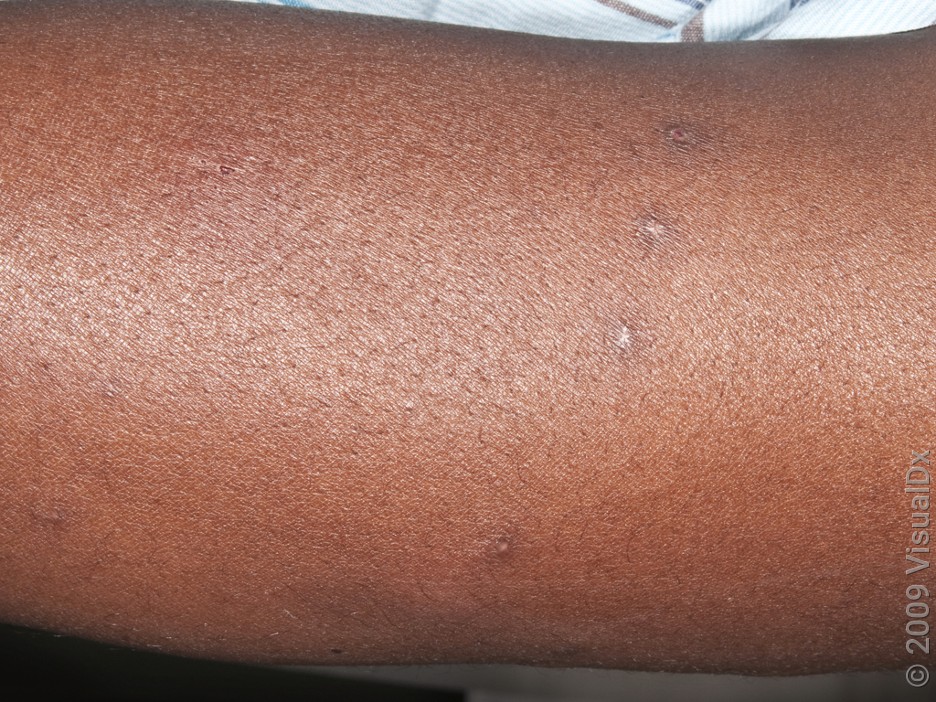

Bedbug bites on the legs
Here are pictures of bedbug bites on the legs.


Bedbug bites on the torso
Here are pictures of bedbug bites on the torso.
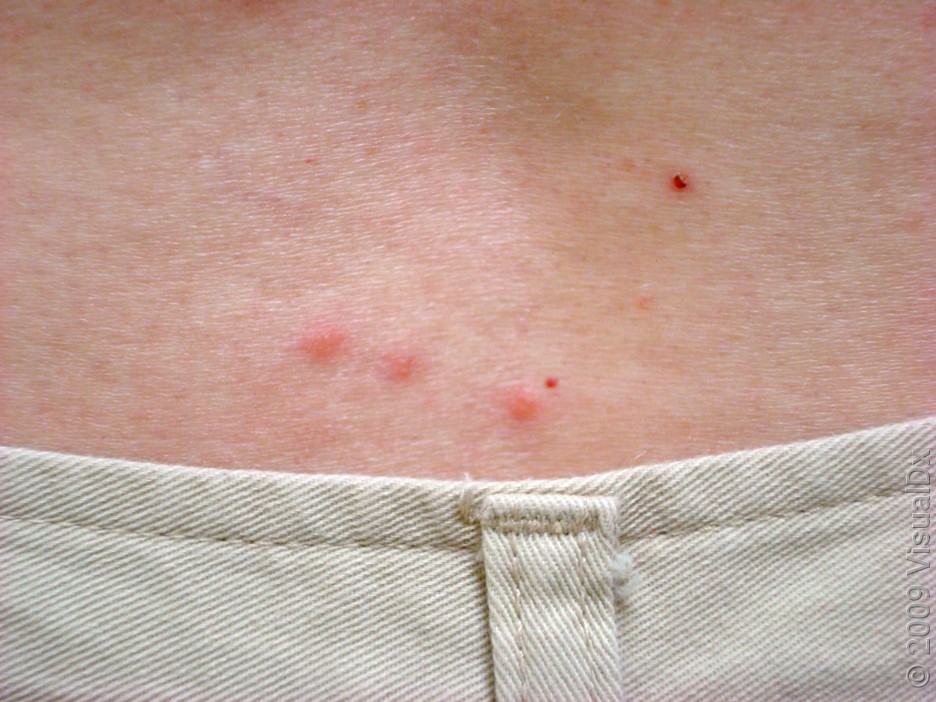
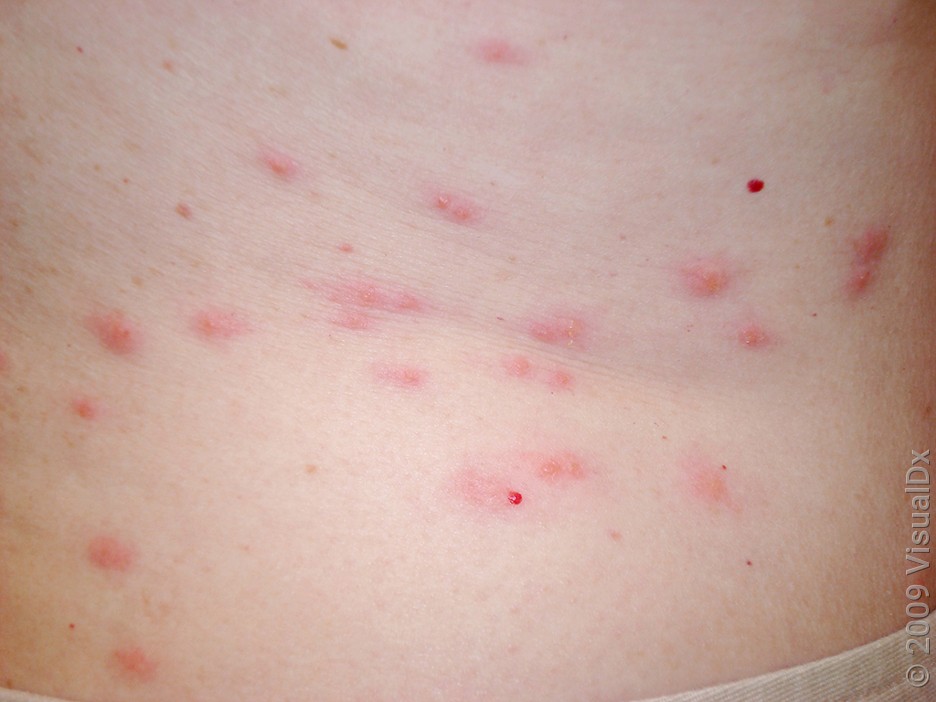
Signs of bedbugs to look for
In addition to having typical bedbug bites on your skin, here are other common signs of bedbugs to look for:
Bedbugs in the seams of the mattress or couch, around the bed board, or in the folds of sheets or curtains
Small red or black stains on the sheets (from specks of blood due to bites)
Tiny black dots on the bedding (from bedbug fecal matter)
Yellow outer shells that bedbugs shed as they grow
Tiny, white, oval eggs in the mattress seams and crevices
A sweet or musty odor if there are many bedbugs present
How to treat bedbug bites
Treating bedbug bites is all about lessening the itch and helping you feel more comfortable. Here are some treatments that can help lessen your symptoms:
Antihistamine pills like Zyrtec (cetirizine) and Claritin (loratadine) to help relieve itching
Topical steroid creams like hydrocortisone to help reduce itching, redness, and swelling
Oatmeal baths to help soothe and moisturize skin
Cold compresses to reduce itching and swelling
Keep in mind that if you have bedbug bites, wearing loose-fitting and breathable fabrics (like cotton) can help avoid irritating your skin even more.
How can you get rid of bedbugs?
Bedbugs have become resistant to many pesticides, so getting rid of them can be tough. For most people, getting professional help from an exterminator is the best option. If you want to try and do it yourself, here are some things to try:
Use a mattress cover to prevent bedbugs from getting in or out.
Wash sheets and other items in hot water for 30 minutes followed by high heat in the dryer for 30 minutes.
Declutter your room to remove bedbug hiding spots
Vacuum the entire area, including crevices like furniture seams and around the headboard and bed frame.
Put non-washables in a plastic bag in the freezer for 3 days.
Ease the itch: While they don’t lead to any long-term medical problems, bedbug bites are extremely itchy. Try these at-home remedies and over-the-counter options for relieving irritation.
Found bedbugs in your home? Learn more about do-it-yourself options for getting rid of bedbugs — and when to call in the professionals.
Preventing bites: As you work to get rid of bedbugs, these methods can help prevent them from biting you while you’re sleeping.
How can you prevent a bedbug infestation?
When it comes to bedbugs, the best treatment is prevention. Whether you’re traveling or buying used furniture, these simple tips can help you keep bedbugs from settling into your home:
Regularly inspect and vacuum your room.
Check secondhand furniture for bedbugs before bringing pieces into your home.
Keep your room free of clutter.
When using shared laundromats, transport clothes in plastic bags.
If you’re in a multi-family home, seal cracks and crevices in between units to keep bugs from spreading between units.
Frequently asked questions
A bedbug bite is likely to be your best clue that you may have bedbugs in your home, bedding, or clothes. Beyond the bites, you can look for small stains on the fabric of your clothes. These stains can be reddish or brownish, from your own blood or bedbug feces.
Bedbugs can be hard to spot. And it can be easy to confuse them with similar looking bugs, like:
Booklice
Carpet beetles
Fleas
Cockroach nymphs
If you aren’t sure what you’re dealing with, consider contacting a pest control company or a professional exterminator.
Bedbugs in a home will survive for at least several months. Exactly how long they live depends on the environment, including the temperature, food sources, and any insecticides. In room-temperature labs that provide plenty of food, adult bedbugs live from 99 to 300 days.
The bottom line
If you think you have bedbug bites, it can be pretty distressing. You can have just a few bites at a time or even a dozen or more. They usually occur in clusters and form zigzag or line patterns. Other signs of bedbugs include tiny oval eggs in your mattress seams, small red or black stains on the sheets, and yellow outer shells.
If you have bedbugs, your best bet may be to hire a professional exterminator. But if you want to try getting rid of them yourself, there are some things you can do, like using a mattress cover, decluttering your room, and washing all linens and clothes in hot water followed by high heat.
Why trust our experts?



Images used with permission from VisualDx (www.visualdx.com)
References
American Academy of Dermatology Association. (n.d.). Bedbugs: Diagnosis and treatment.
Miller, D. M., et al. (n.d.). Bed bug biology and behavior.
Toronto Metropolitan University. (n.d.). Insects commonly mistaken for bed bugs.
U.S. Environmental Protection Agency. (2024). Do-it-yourself bed bug control.
U.S. Environmental Protection Agency. (2024). Pesticides to control bed bugs.
U.S. Environmental Protection Agency. (2024). Protecting your home from bed bugs.








